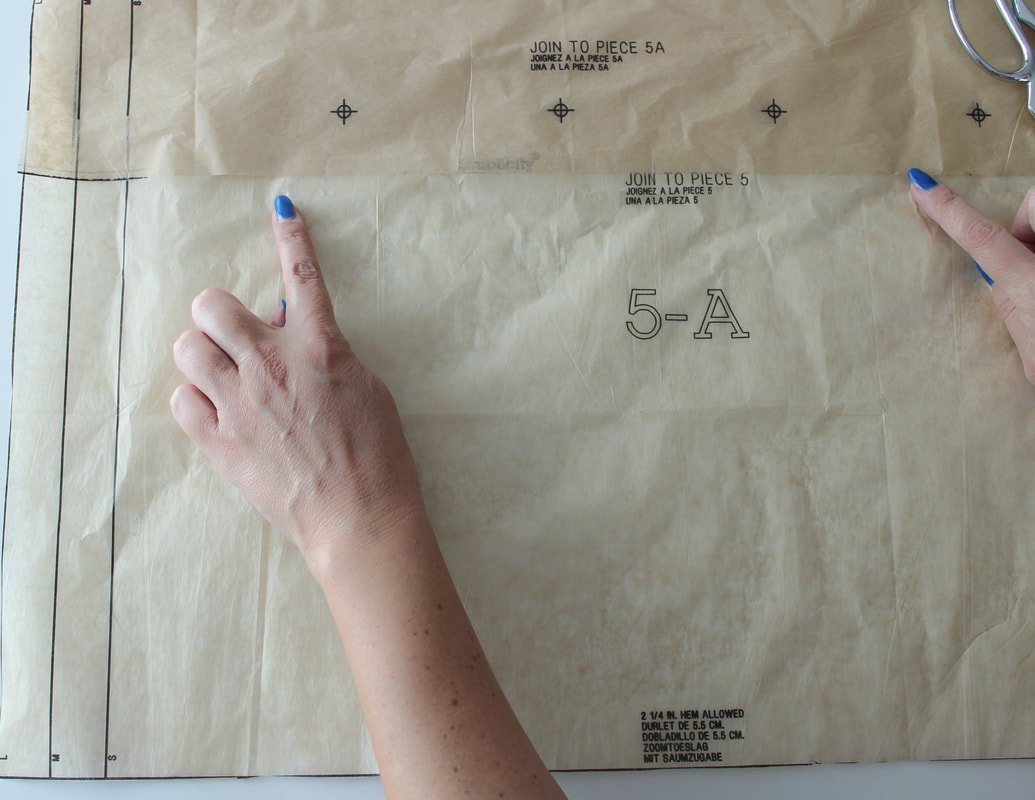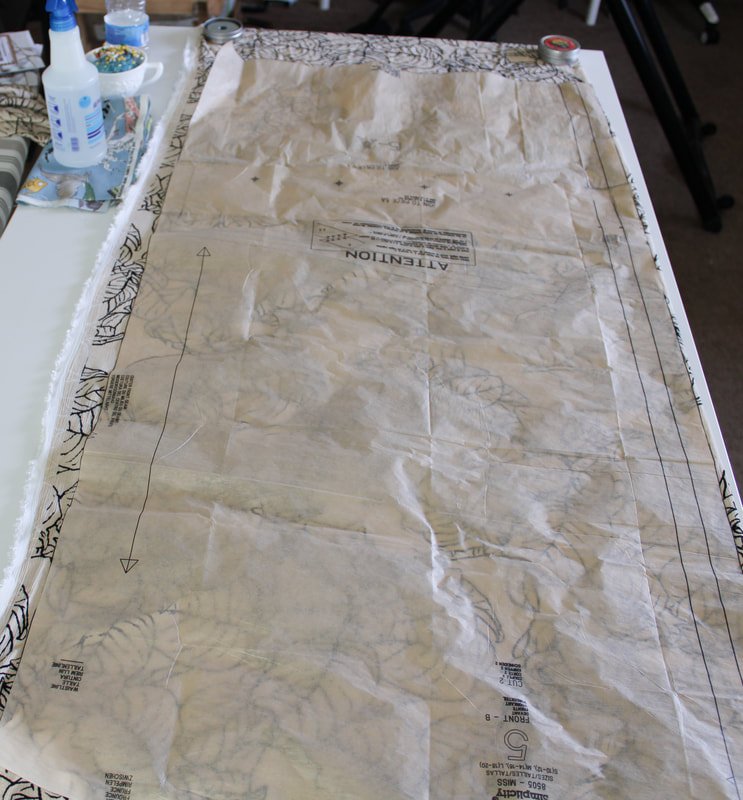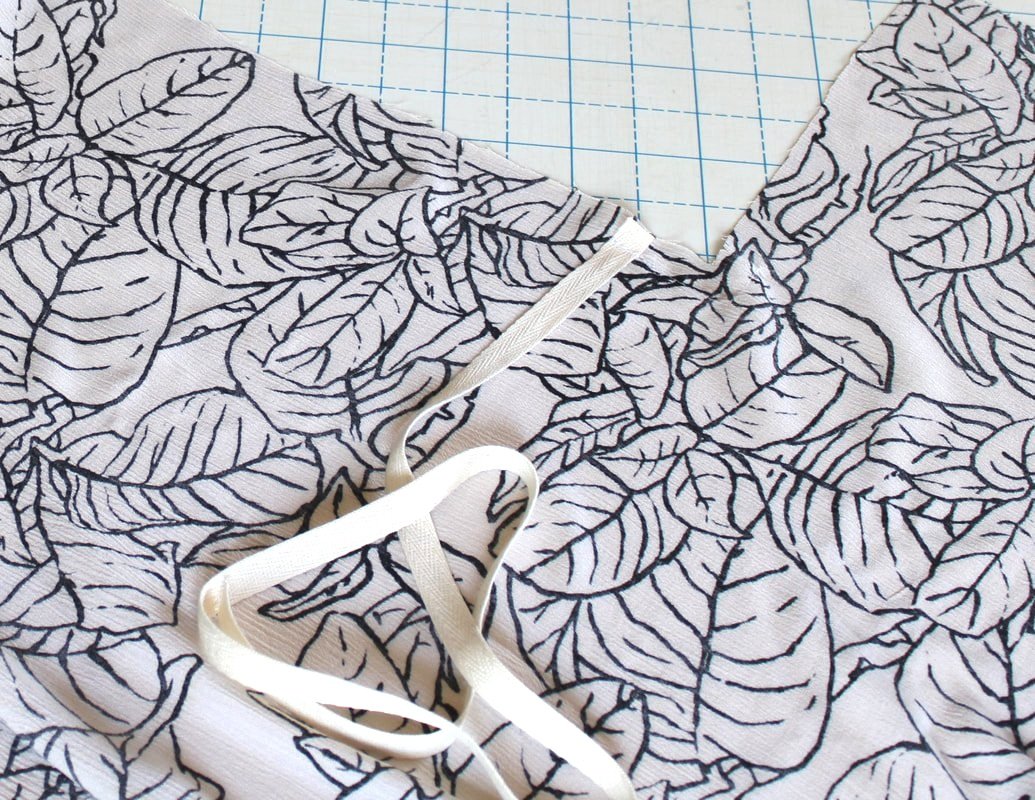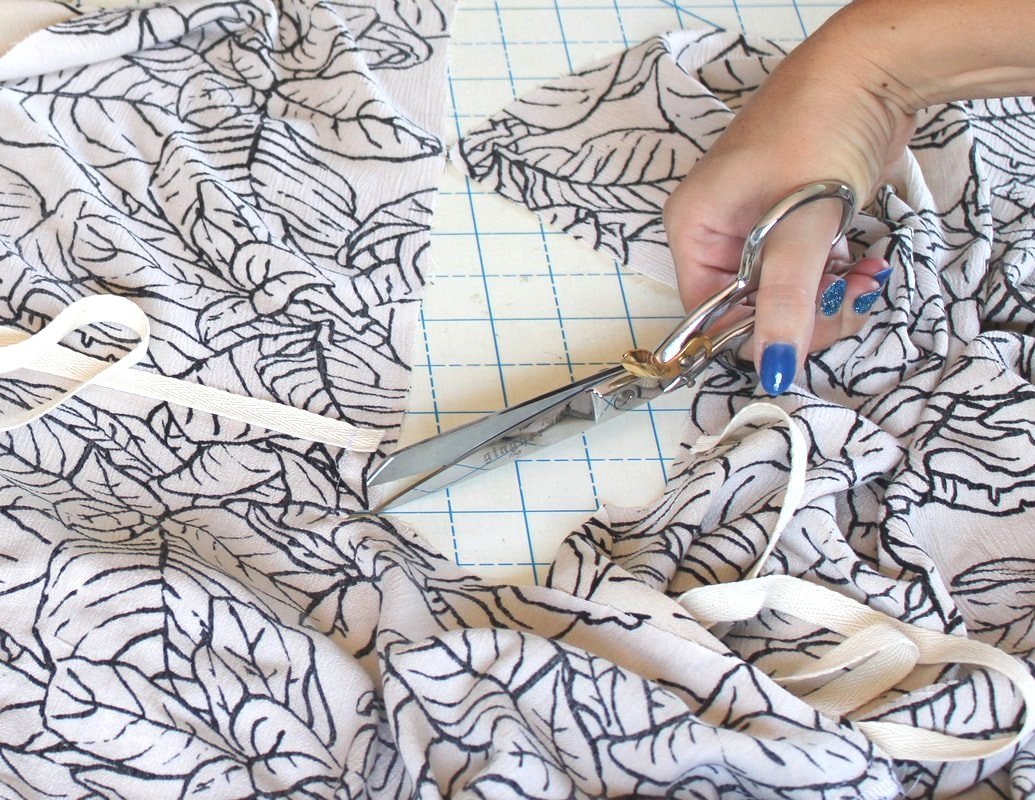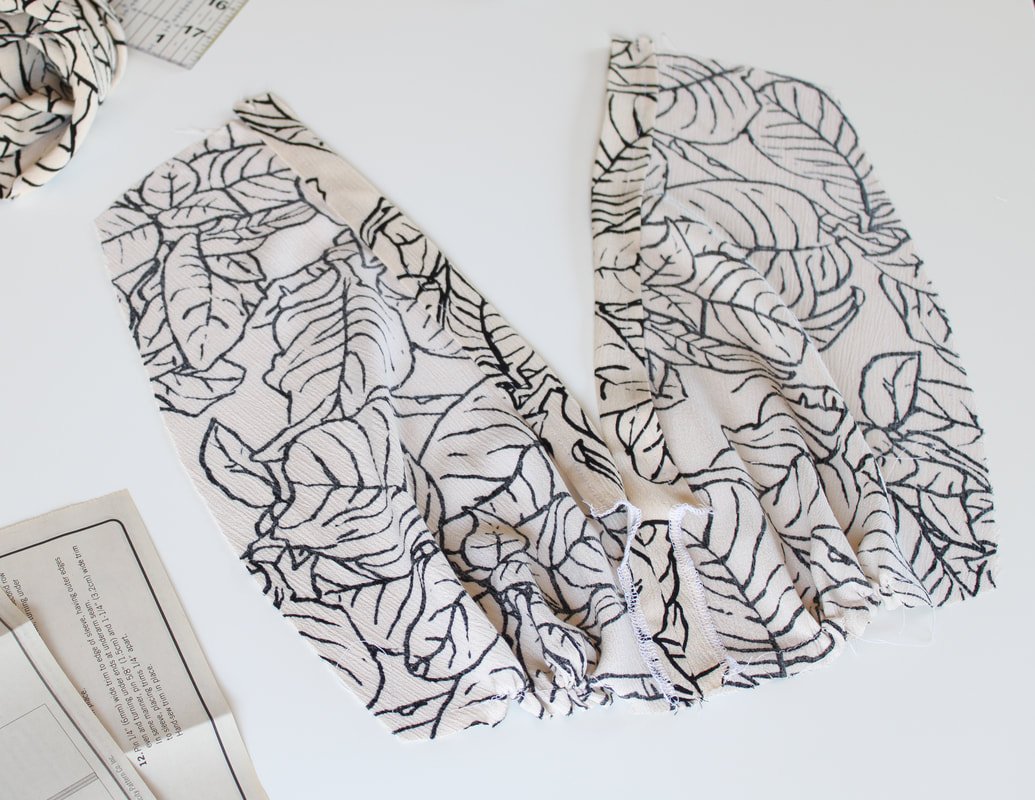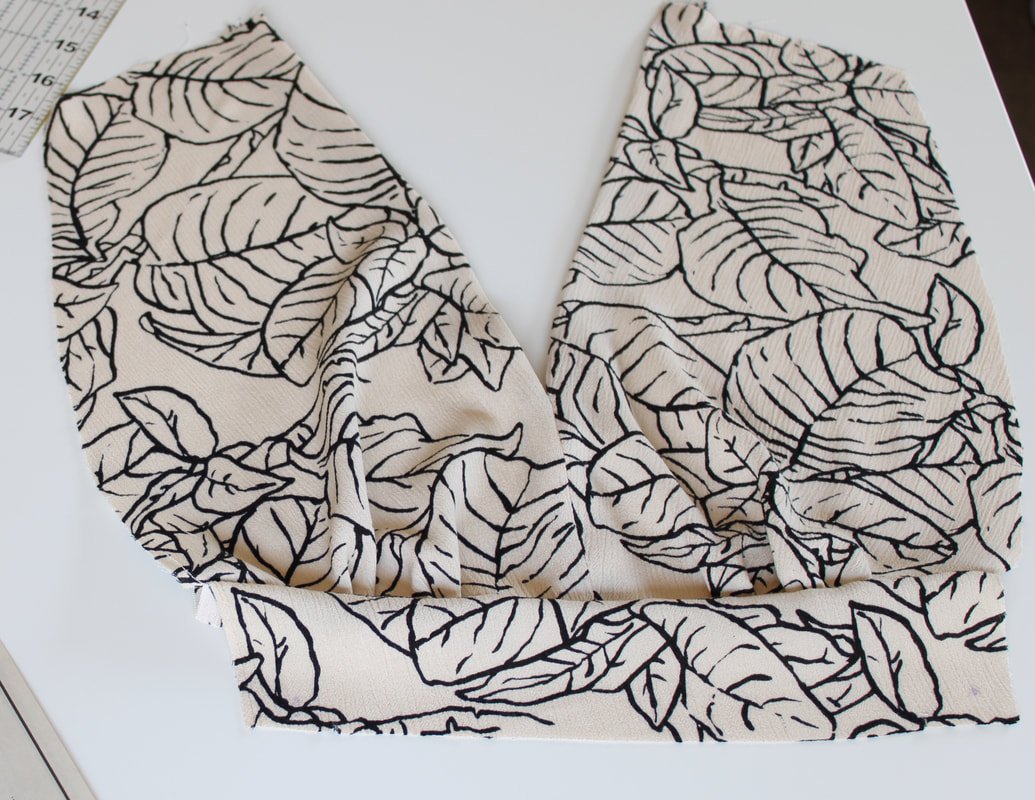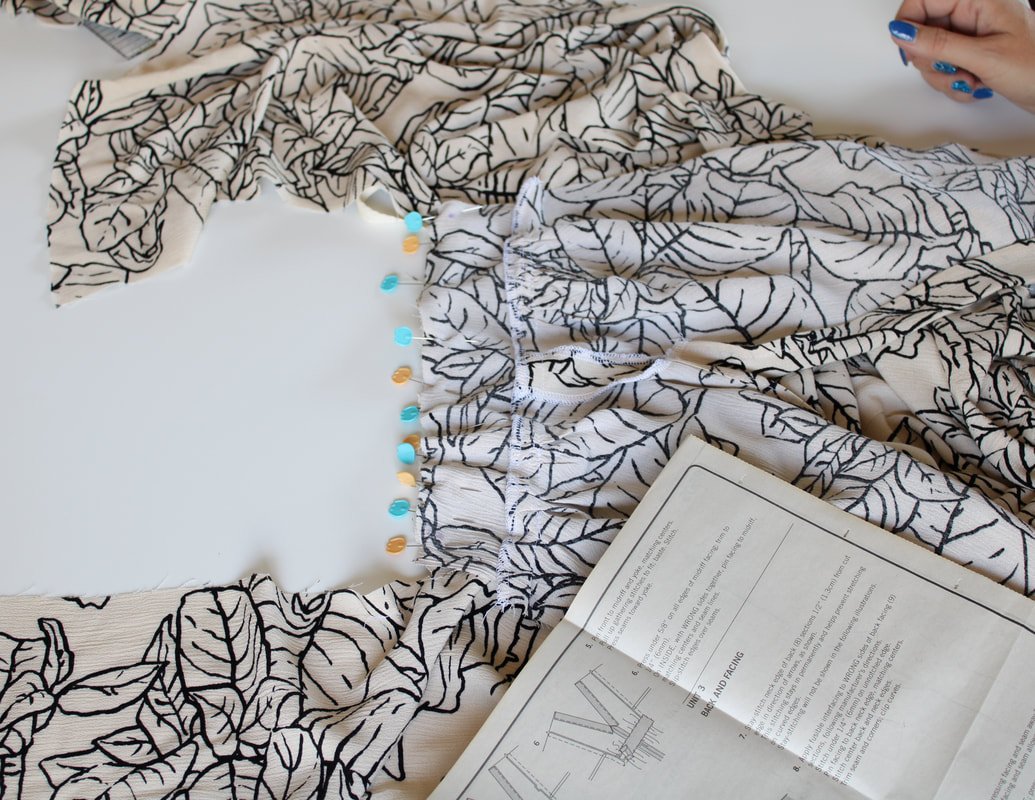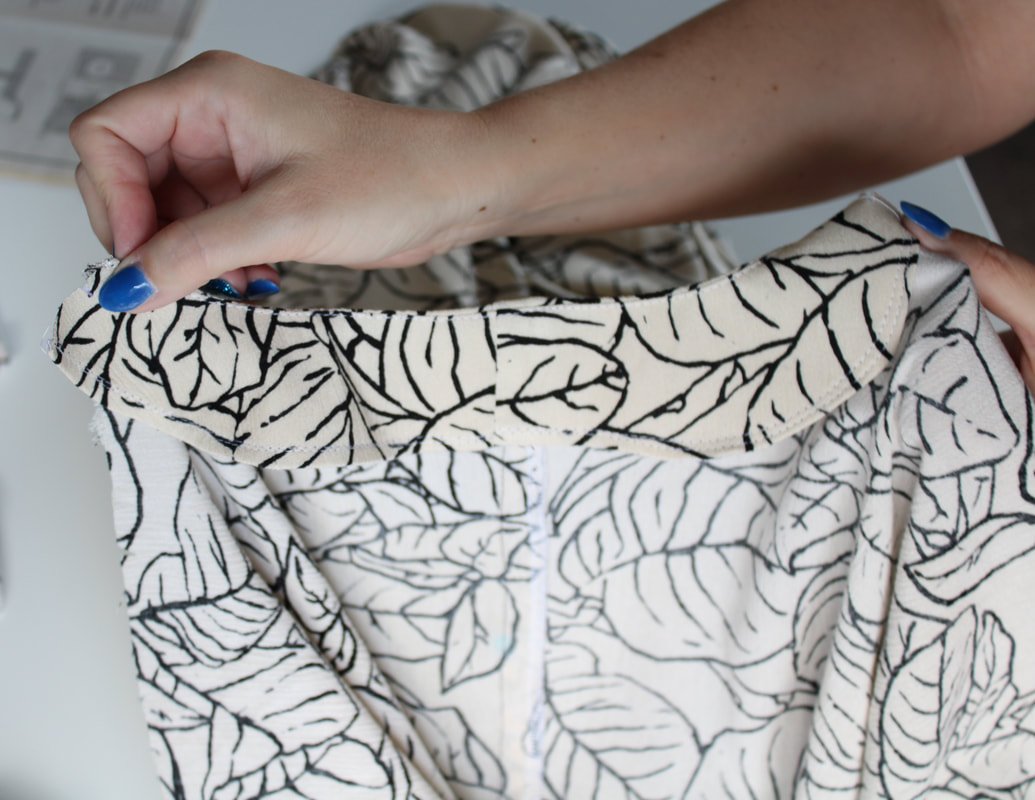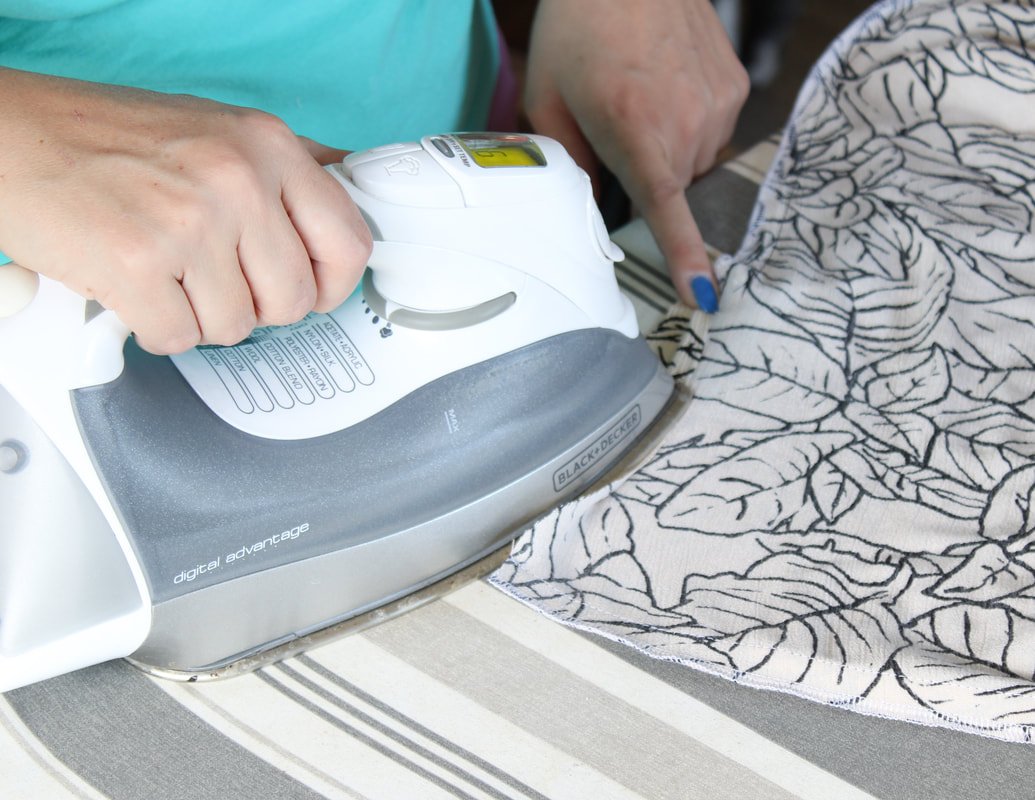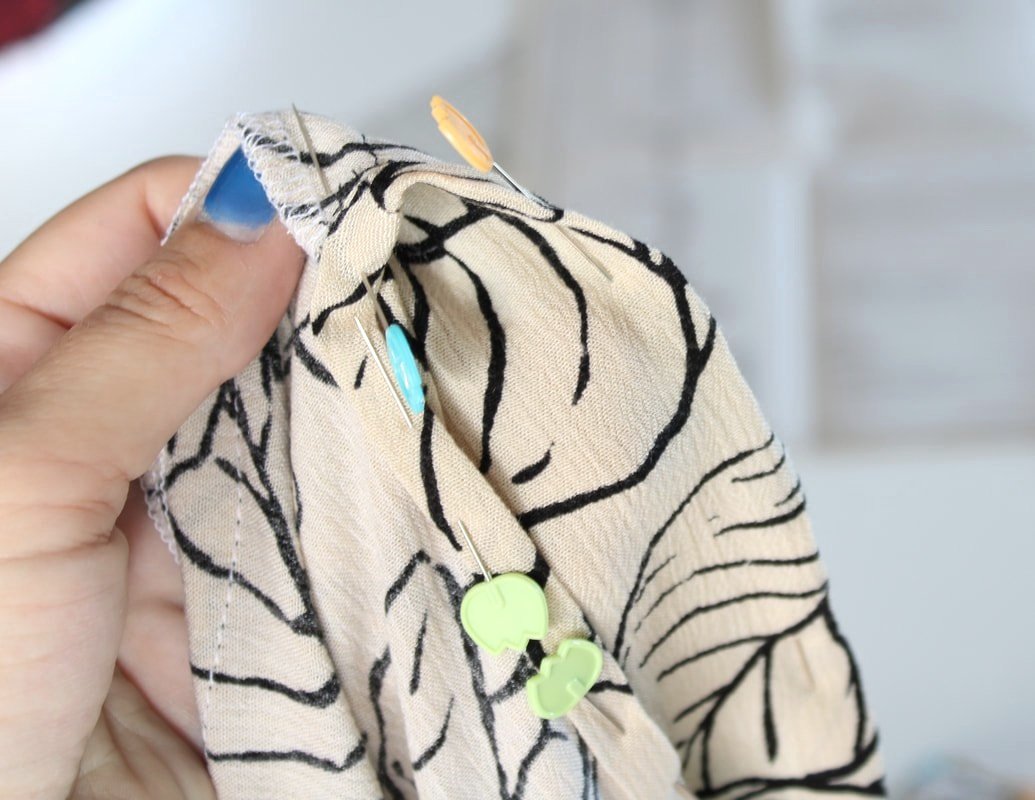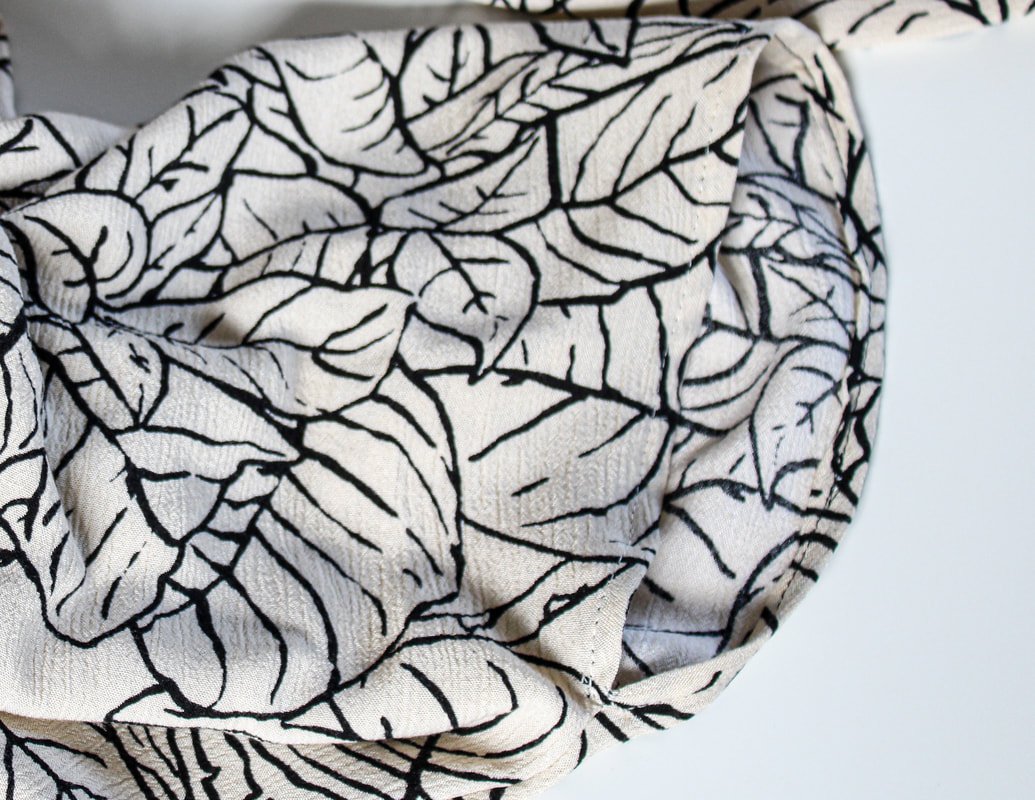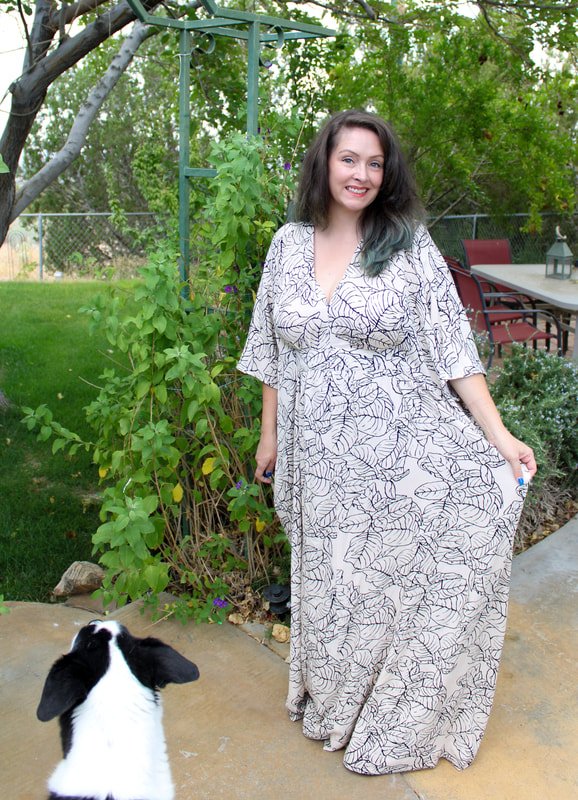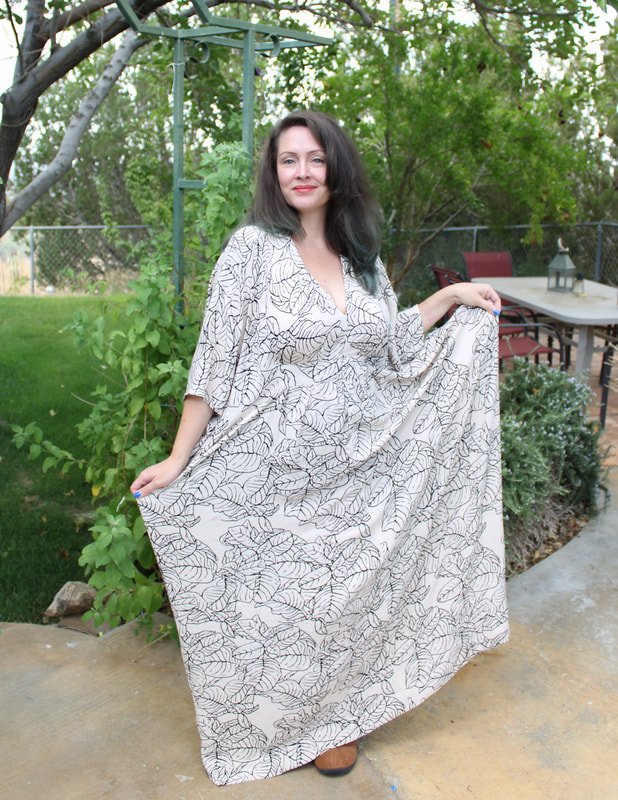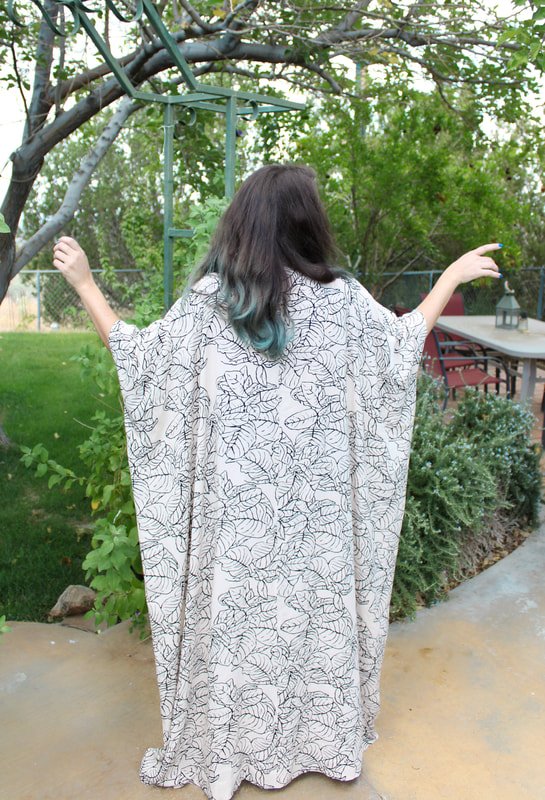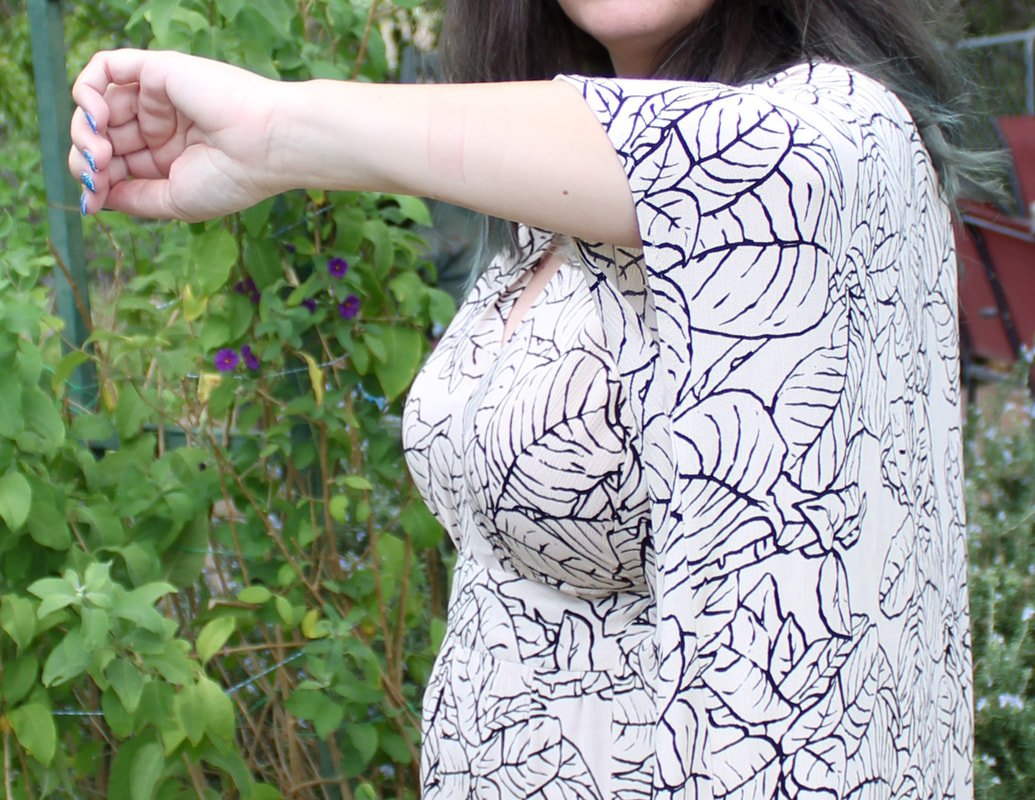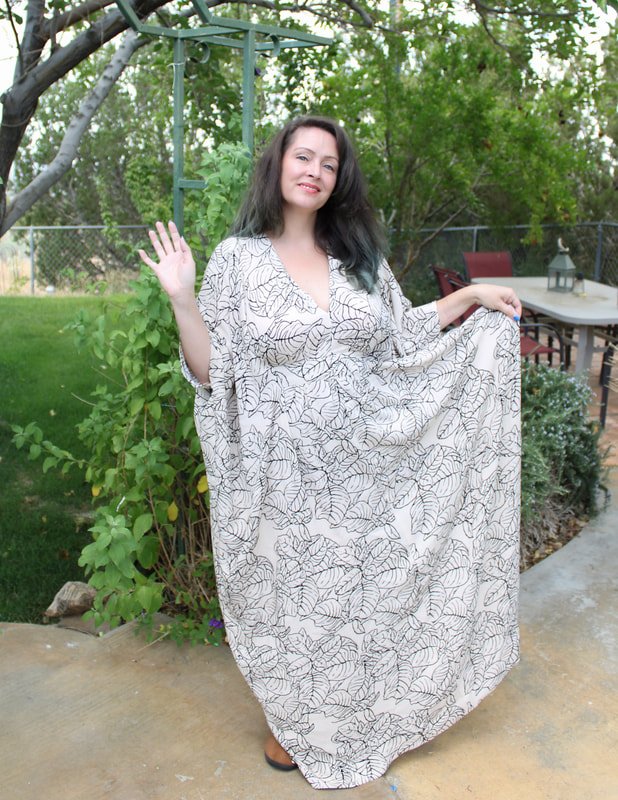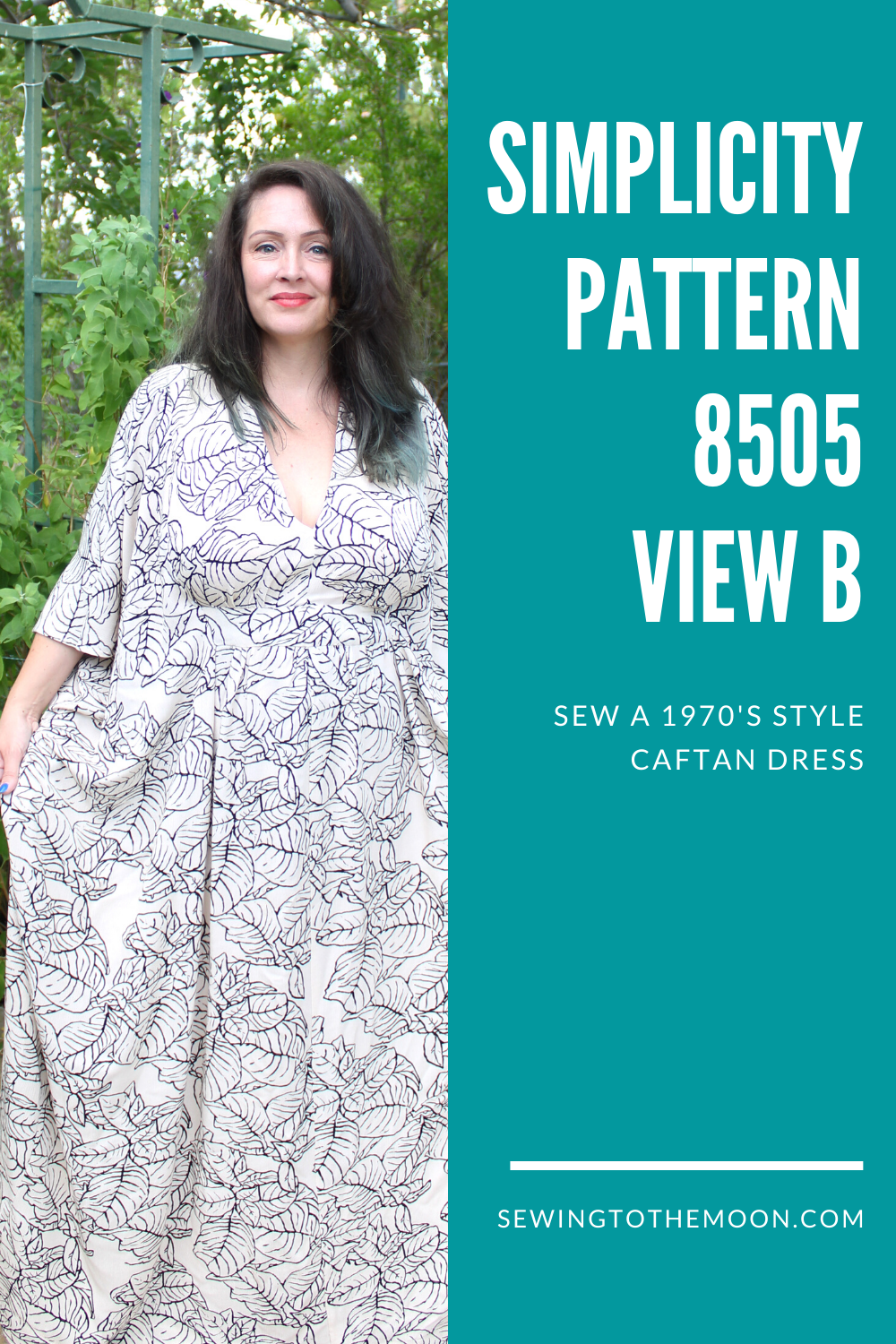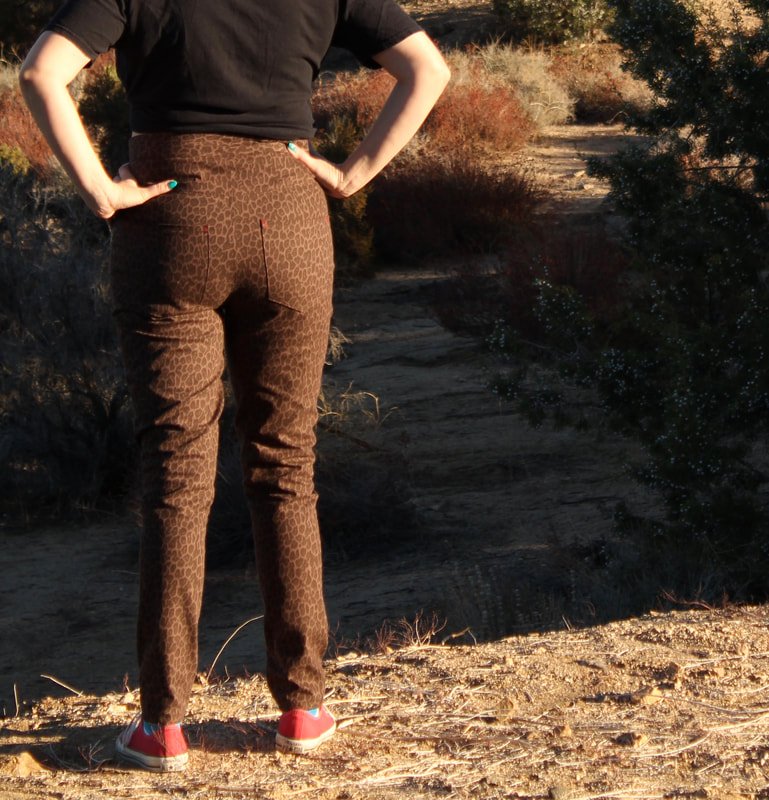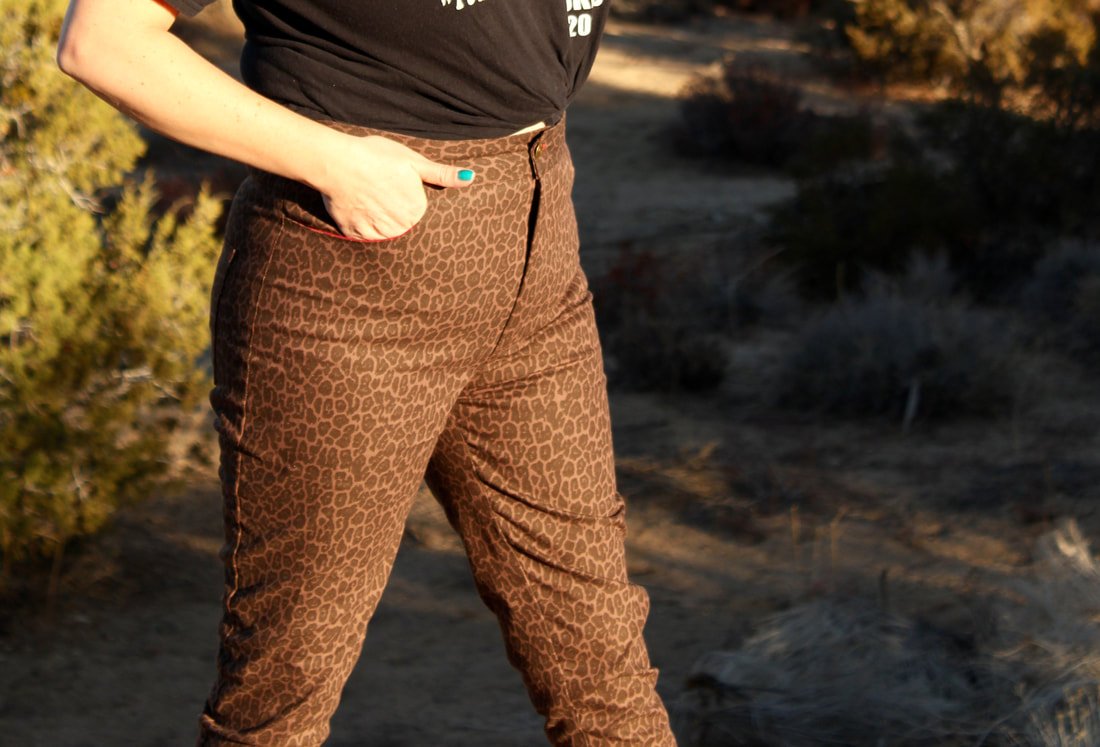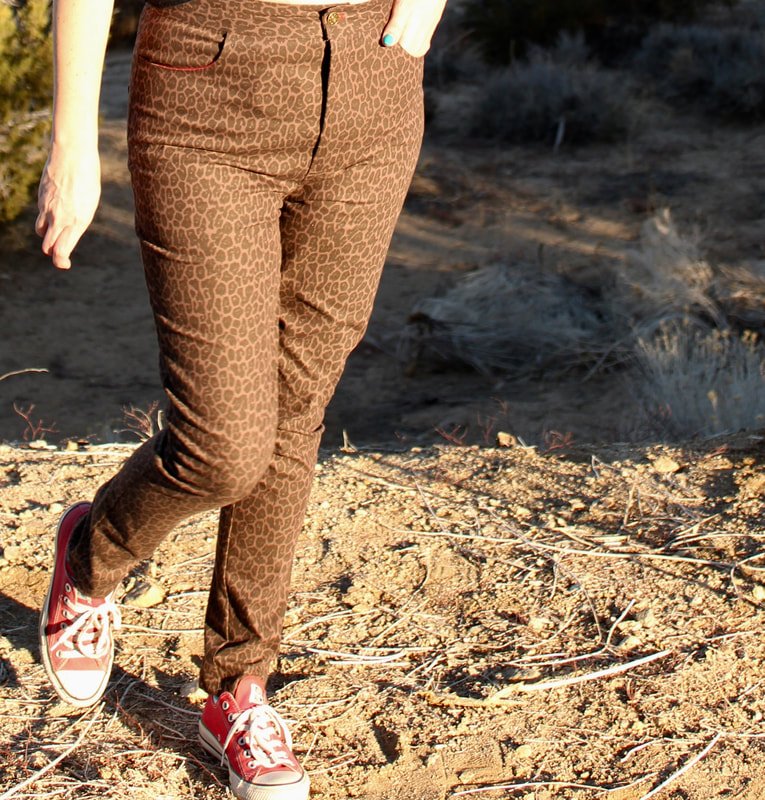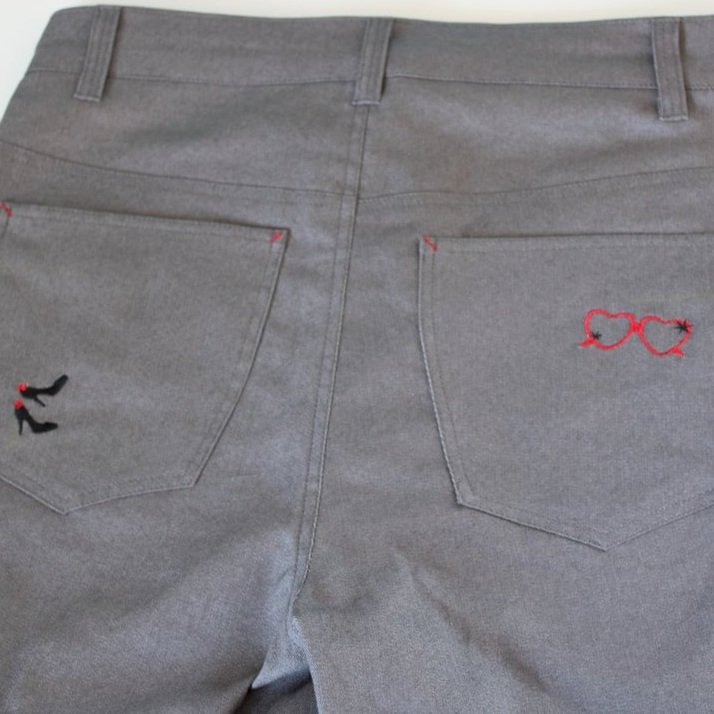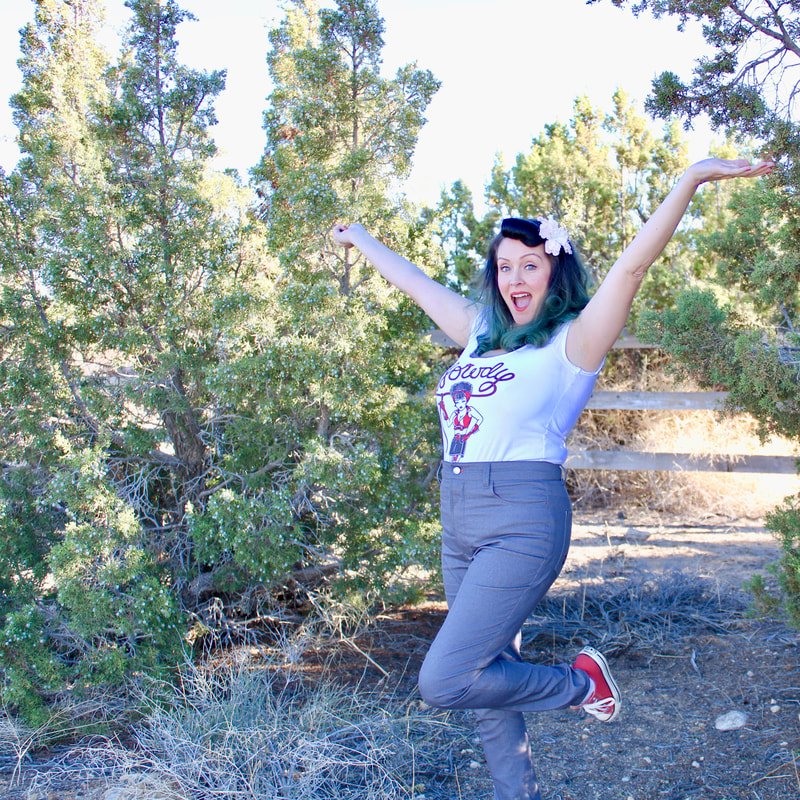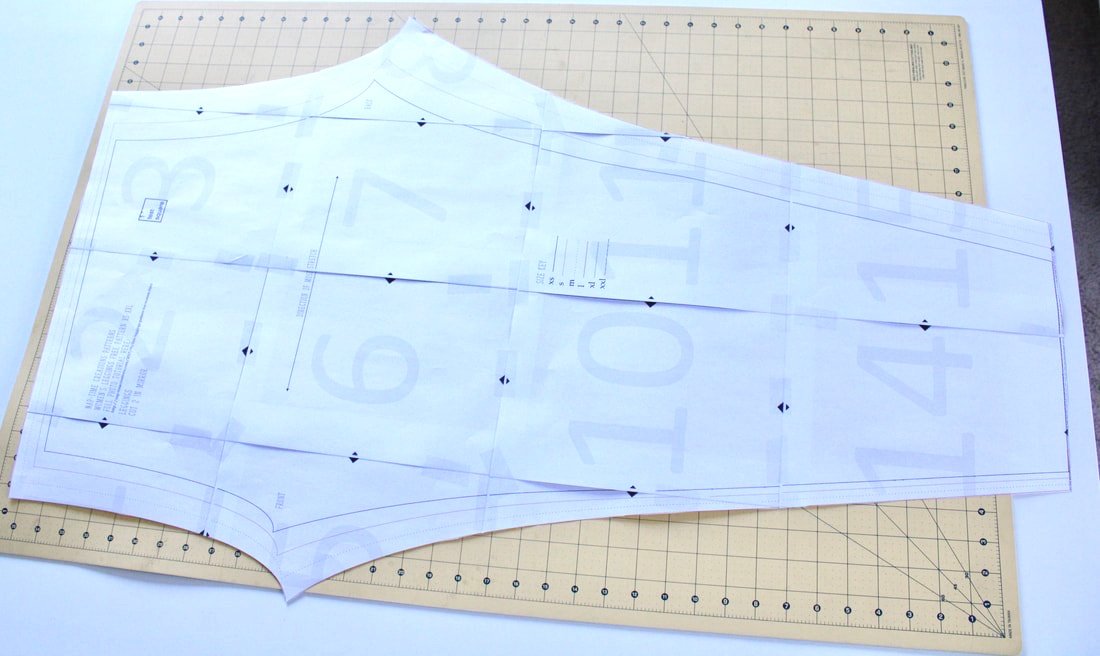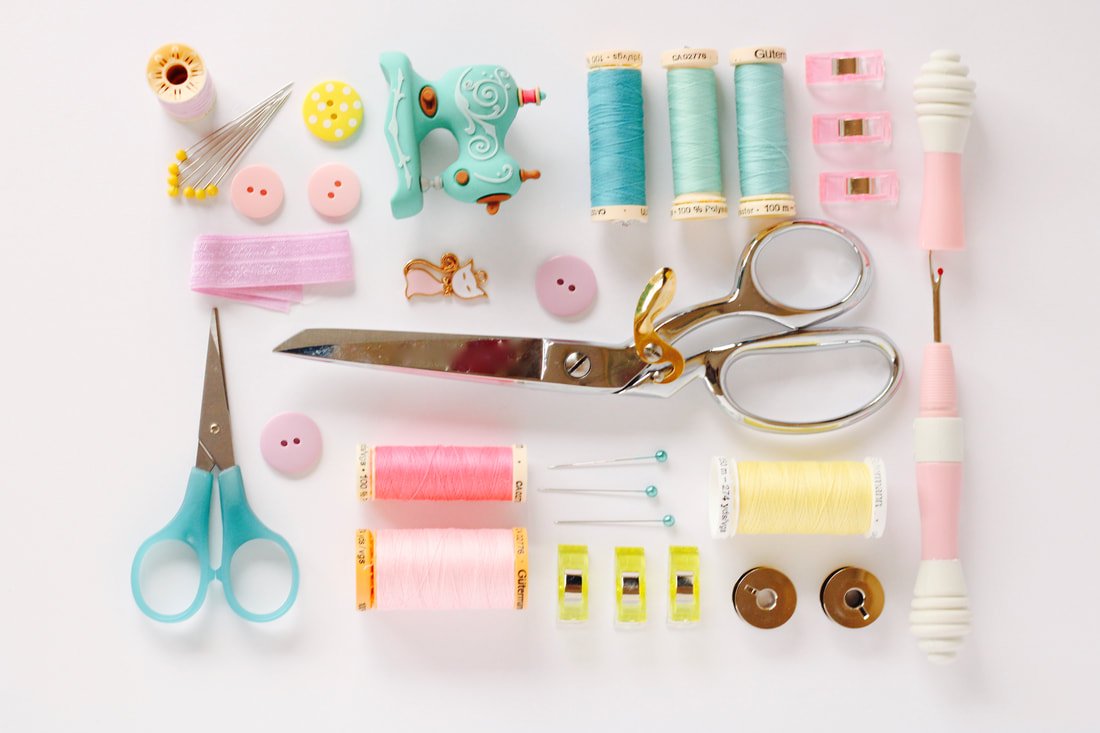
Pattern Reviews, Sewing Hacks, Tips & Free Patterns
Sewing Blog Besties
Simplicity 8505 Caftan Sewing Pattern
Have you ever dreamed of floating around the house in a vintage 70's caftan? What about in your beautiful backyard? I vote yes for both! This Caftan sewing pattern is the only one you need, it's vintage and authentic.
Way back in high school, I borrowed a caftan from my mom's friend to wear to a dance. The 70s wasn't the theme but, I wanted to wear it. It felt so silky and soft while I wore it and danced all night long, with friends.
When I saw this pattern via an Instagram friend, I knew I had to snag one for myself. She looked so fabulous in hers, and I knew I needed that pattern in my life. I hope you grab the vintage reproduction pattern and make a caftan, too.
Oh hi there! I’m just over here living my best 70s life.
I ordered the Simplicity pattern 8505, a 1970s caftan pattern from an Etsy shop. After searching my local sewing shops for the perfect fabric, I decided to order that online too. If you make this, I recommend looking at fabric in person first, to give you ideas. It's fun to feel the drapey fabrics. Who doesn't love touching all the fabric? Are you ready to make the comfiest dress ever?
Let's get started.
Here's what you'll need. I also wanted to share a few tips and ideas for you to try, if you want.
Supply List for View B
Simplicity Pattern 8505
3.5-6 yards of fabric (depending on your size)
Interfacing Scrap
2 yards of twill tape or ribbon, 1/2" wide
1 1/2" button
Matching thread
Microtex or Sharps sewing needle
Sewing machine + all the notions (scissors, clips/pins, rulers, etc.)
*Optional: Fleetwood Mac playing in the background ;)
Tips for making this pattern:
This pattern doesn't have pockets, but I would add some. Use another in-seam pocket pattern from a pattern you already own. Try the dress on after you sew the shoulder seams to see where you'd like your pockets to be.
When you sew the front to the midriff, to the yoke piece, make sure to match the center seams. I didn't pay close enough attention and wished I had. Use a water-soluble marker, Frixion pen, or another writing tool that will disappear to mark the centers.
Measure, measure, measure! I measured myself and made a Large. It fit like a tent. I cut the side seams smaller, but it fits bigger than I'd like. You might need a smaller size than you'd think. ;)
Instructions:
Measure yourself and write your measurements down. Read the finished measurements on the pattern tissue to help decide the correct size for you. The big four pattern companies usually give a ton of ease in their patterns. You want a caftan, not a tent.
Cut out the pattern pieces. Trace the pieces onto the fabric and cut them out. It's a lot of fabric so, a nice big workplace such as the floor is great for this part.
I usually trace onto pattern paper but, this style is very loose and I knew I wouldn't need to make fitting alterations.
**You will have to tape the front (5 and 5A) piece to an extended piece. Match the stars and tape them together. You'll do the same for the back piece (8 and 8A).
The pieces were very large so, I used pattern weights and cut the fabric without tracing. Gasp, I know! Trace the neck-facing piece though.
Time to sew.
Attach twill tape ties and sew reinforcing stitches at the corners of the front pieces. Clip to the corner but, not through the stitching.
Sew the front center seam.
Sew the front center seam. I serged the seam after and pressed it to the side.
Gather those tiny ruffles.
Sew 2 rows of gathering stitches using a 4-5mm stitch length, between the notches across the front. Pull the bobbin thread to lightly gather the front. It helps to leave long thread tails to pull the gathers.
Press down along the fold line on the front. This will become your front V neckline.
This is where I had the most difficulty. Gathers are easy but can be a pain in the you know what. So, go slowly, check twice, then sew.
Pin the yoke to the front pieces matching all the notches together. Sew and press the seam downwards.
Serge or sew the edge 1/4" under the midriff pieces. Press along the fold line.
Pin the front midriff and yoke piece to the front pieces.
Make sure to match the center seams. Sew the bottom part of the yoke to the gathers first, then sew the sides. I didn't do this and found it a tad difficult to fit. Again, make sure you line up the center seams.
Grab the back pieces and neck-facing pieces.
Stay-stitch the back neck.
If you haven't already, apply your interfacing to the neck facing at this point.
** I left the button off and sewed a solid back seam. You can sew the button closure or not, it's your choice.
After the back seam is sewn, sew the neck facing onto the back matching the seams. Press open or to the side.
Yay, you're almost done!
Sew the shoulder seams, and press.
Then, sew up the side seams. Start from the hem and go up to the notch/dot.
Try it on at this point to see if you want your armholes smaller. I ended up sewing 7" from the top for my sleeve opening. This was a perfect amount for my arms.
Hemming the caftan.
Last but not least, it's hemming time.
If you're on the shorter end, you'll need to whack off some serious length on the bottom.
Hem the sleeves. Fold and press 1/4" under, then 1/4" under again, and topstitch.
The bottom hem was an issue for me. I measured (I usually just eyeball it) and, it came out wonky. I don't have any magical words of advice for you on hemming. Sorry. :( I used my dress form to pin the hem and then sewed it. And it was perfect in the back but several inches too long in the front and sides still.
So, the caftan dress sits in the timeout corner for now. I could hold it up while I walk around but, that's frustrating and not very chic or glamorous. Some day I'll rip it out, cut it, and re-hem it. Maybe next spring when I get the itch to float around in the warm sun, in my backyard again.
Meanwhile, enjoy some photos of my too-long caftan. :)
Thanks for hanging out today! As always, if you make one, please tag me on Instagram @sewingtothemoon. I'd love to see your fabric choices.
Happy 70s sewing,
Annette
Sewing the Ginger Jeans
Sew your own high waisted pair of jeans. The Ginger jeans sewing pattern by Closet Core is great. It’s beginner-friendly as well.
Ginger Jeans! I made a pair and love them. These were fun to sew and I learned a few things along the way.
Living in comfy clothes seems to be the new norm. Cozy pants especially. Fleece-lined leggings, flowy lounge pants, soft cotton harem pants, and PJ's of course. Gimme all the couch surfing pants.
Jeans don't really fit into the cozy pants category but, I'm going to talk about them anyway. Jeans are something I rarely reach for when I get dressed in the morning (afternoon?). If I do wear jeans, I reach for my Calvin Klein high-waisted skinny jeans. They fit my body like a leather glove. So, when my friend told me about the January Jeans sew-along, I jumped on board!
The Jeans Fitting Journey
This post is a little different than my usual pattern posts. Hundreds, if not more, Ginger Jeans tutorials already exist. So, I wanted to do something different. I'm taking you through my jeans-fitting journey. Beware though, it's gonna get ugly before it gets pretty.
The January Jeans sew along was hosted by some lovely ladies in the UK, on Instagram. They set up a Slack app group for all of us to post and share photos to. We had live Zoom calls every Monday and then we were put into smaller Zoom groups. It was a whole jeans journey. We helped each other with fit issues and got feedback on our own jeans.
If you've ever wanted to dabble in jeans sewing, you really need to get the fit correct. Here we go!
Materials Needed
First, you need a pattern. I chose Closet Core's Ginger Jeans pattern in View B. It's a skinny leg, high waist pattern. My favorite style of jeans. But, you might want a low rise, wide-leg style. Scour the interwebs for a pattern that fits your specific taste.
2-3 yards of Denim (check what % of stretch you'll need too)
Cotton fabric for pocket linings
Interfacing
A jeans zipper (*it needs to be a metal jeans zipper so the pull will lay flat against the pants/ your body)
Denim thread, regular thread, topstitch thread (optional)
Jeans needles
Fabric for a muslin (preferably denim)
Jeans button
Rivets (optional)
Awl and hammer for inserting buttons and rivets
Rulers, a chalk marker, scissors or rotary cutter, etc.
Sewing machine
Patience and time
Serger for finished seams (optional)
Make a Muslin
Jeans sewing is an easy process. I've made a few pairs of “jeans” from Gertie's book, Gertie Sews Vintage Casual. However, this was my first time making a zipper fly and I was a little bit intimidated. Sewing your muslin fabric is a great way to practice a new skill or technique. It wasn't hard at all!
I really do recommend sewing a muslin first. It's a trial run. You can rip out seams, cut fabric to make space for your hips and legs, and practice topstitching. Use it as your "scratch piece of paper." Through my first muslin (that I made with 0% stretch fabric), I found that the so-called high waist wasn't high enough for me. My first adjustment would be to add length to the rise.
The first muslin fit, almost. I cut out a straight size 12. I like to cut one size that is the closest to my measurements and go from there.
The jeans were snug around my bum and tummy area. An easy adjustment would be to grade up to a size 14 or 16 in the waist area. However, I knew I was going to add height to the tummy area.
Here’s what I did:
Added 1.5" to the length of the rise, to create an authentic high-waist pair of jeans.
Full tummy adjustment. This adds room for those of us with mom bellies or bloaty bellies -that's a very technical term. ;)
Took out length in the legs but, not more than an inch. I'm short but, I have long legs. Thanks to weird genetics!
Low bum adjustment. Although, I didn't end up needing this in the end.
Second Muslin
Yes, if your first muslin was a total bust, do a second one. You could easily unpick seams and go from there. However, I was changing the pattern, so I needed a second muslin. The second would be a wearable muslin pair of jeans. I grabbed some clearance denim, made my adjustments to the pattern paper, cut the new fabric, then sewed the second pair with the adjustments.
And WOW! What a difference from the first muslin. I loved the waist height. I loved what the full tummy adjustment did for me. I did not love the low bum adjustment because it added excess fabric in my rear and in the back of my thighs. You can see all the bulk in the photos below. This pair was cut in a size 12 just like my first muslin. You can see how my pattern adjustments really changed the fit.
Leg Twist Hack
I had a serious leg twist issue with one leg. I followed the cutting directions to a T, too. I cut on the single layer and alternated each leg just like the pattern recommended. Ugh!
I unpicked the inseam and side seams and sewed them back up. No more annoying twisty leg. So, if you do have this issue, I recommend unpicking the seams. Sew the inseam by starting at the cuff of one leg and go up. Backstitch at the crotch seam. Then, sew the other leg by starting at the cuff and sew up to the crotch. This may or may not be the correct way but, it fixed my issue.
Photos below are of my wearable muslin pair of Ginger Jeans. I've worn these around a few times and they fit well enough. The denim only has 1% stretch while the pattern calls for a 2%. They are a little stiffer than I'd like but, no seams have popped open when I bend over. Yet! LOL
I actually like the fit of these better than my final pair. Shhh, don’t tell anyone.
One back pocket is lower than the other but it didn't bother me enough to re-do it. Shhh, it'll be our little secret. ;-)
There is extra fabric and bagginess on the back thighs because of the low bum adjustment. It wasn't needed. I guess I have a high bum. Who knew? Hahaha!! And again, it didn't bother me enough to rip open the seams and fix it. This pair was supposed to fall into the "good enough" category. And they do just that.
Red cotton fabric was used for the pockets, you can see it peaking out a bit. I also did red bar tacks in place of rivets.
Whew, I hope you're still with me. Now, it's time for the final pair!
Final Pair of Ginger Jeans
I chose dark grey denim for my final pair of Ginger jeans. I love a red accent too so, I used red topstitching in place of rivets and made red pockets again.
For the final pair, I did the adjustments that seemed to work best for my body.
Full tummy adjustment
Added 1.5" to the rise to create an authentic high waist
Shortened my leg length by 1 inch
Placed the pockets higher to accommodate the rise adjustment
I love the fit so much! My bottom half isn't very curvy due to my apple-shaped figure. Therefore, these jeans fit so much better than any RTW pair I've ever owned. They fit my legs and waist perfectly. I'm truly happy with the fit.
I’m pretty excited about my new jeans!!
Pastel Denim
This pastel peachy denim will make a perfect pair of Spring jeans. I might even roll the hem up and wear them with flats. A flowy white top and large straw hat too, yes, please!
I love the 3D stitching on this denim. It's not something I've ever seen. I'm not sure if I'll do a white or pastel yellow contrasting thead.
Now that you followed me through my fitting fun, are you going to make your own jeans? I really do encourage you to make a pair. I've made pants before but they didn't have all the stitching detail. These taught me more about fitting your own body and how perfecting the fit really does make all the difference.
If you're still on the fence about jeans making, maybe these trousers are more your speed. They're wide-legged and flattering on everyone.
Or, would you rather stick to an easier project? Sew up a little something here, here, or here.
Either way, go sew something! You deserve it! :D
Happy jean sewing,
Annette
Sew Custom Fit Leggings
Sew a pair of custom fitting leggings for yourself or your little one. This is simple pattern drafting.
Do you love wearing leggings? How about sewing your own leggings? Yes, no, maybe? We are 100% team leggings in this house. I don't buy my youngest daughter any other kind of pants. Heck, they are even my go-to pants (read: secret pajama pants) to wear out of the house. So, if you aren't on board with making your own leggings yet, you will be after reading this. At least, I hope you will.
If you're not interested in making leggings for yourself, scroll down to the bottom. I share a tutorial I use for making little kid leggings.
If you've been dying to make leggings that actually fit your body, look no further. Grab this FREE pattern to get started. You'll be cozy and cute in no time. Lately, simple patterns have been more my jam. Take all your measurements and write them down on paper.
I measured my waist, hip, knee, calve, thigh, and ankle widths. The sizing put me into a size Large waist, Medium hips, and narrowed down to an X-Small in the ankle department. I love my weird body. Buying leggings from the store is never fun because they are baggy in all the wrong places. You might be the exact opposite. We're going to make these leg prisons according to your own measurements. Wooo!!
My original plan was to follow a tutorial and draft my own pair. Well, my brain couldn't do all the math. So, in the end, I found this pattern that worked perfectly for me! Let's get started.
What You’ll Need
Just over a yard of knit fabric
Thread
Measuring tape
Stretch or ball-point needle
Twin needle (optional for leg hem)
1 inch thick elastic for the waistband (I prefer non-roll)
Sewing machine that can do a Zigzag stitch
Serger (optional)
Roll of tracing paper, medical paper, or freezer paper (my preferred paper for tracing)
Pencil and pens for tracing
Seam ripper because, let's be honest...
Tape for taping pattern pieces together
Printer to print out the PDF pages
All the other sewing notions you usually use ;)
Pattern Set-up
Click here for the FREE pattern. You will add to cart but, it is a free PDF. After you "purchase" you will be able to print out the pattern.
Match the lines and arrows, then tape everything together to form your pattern. Figure out where your measurements lie in the legging pattern size range. You might have to grade between sizes. Grading is easy and doesn't take any extra time. You simply blend the sizes to fit your unique body shape.
You can use a highlighter or other light colored marker to grade your sizing, directly onto the pattern. Or, Take your tracing paper and lay it over the pattern. Trace your new pattern size. Doing this saves the PDF for future use or if you decide to make a smaller or larger size for a friend.
I suggest making a muslin before cutting into your beloved fabric. If you have stretch fabric you're not in love with, use that. you want to get the length correct too. If you're taller or shorter, you will need to make adjustments accordingly.
Sewing the Leggings
Sew each inner seam with right sides together. You can use your sewing machine or serger for this.
Then, take one leg and turn it right side out. Place your arm back through and feed the leg through the other leg, making sure right sides are touching. Straighten the leg, matching the seams together. You're going to sew the large "U" shape crotch seam from one side to the other. Use pins or clips to keep the layers from shifting around. You can use the sewing machine or serger for this as well. After the crotch seam is sewn, pull out the legs.
If done correctly, it should look like a pair of pants. If not, grab that seam ripper because something went wrong. Uh-oh!
Perfecting the length
Try them on. They should fit nicely.
If they fit too snugly, use your seam ripper to let out the seam in the snug areas.
If they fit too loose, go back over those spots with the sewing machine to make them fit more snug.
If the length is too long, you can shorten them at the ankle hems. If you want them to have a lower rise, shorten the waist. If you need more length, add those inches to the pattern.
All you have to do is sew the hems at the ankles and put in your elastic waistband. Comfy and super simple.
Hopefully, you found the PDF pattern easy to print out, tape together, and use. I will be making more leggings for myself soon.
I LOOOVE leggings!! And, now they will fit my funky shaped bottom half of my body. Hahaha!!!
Will you be making leggings for yourself? If not, keep reading. I include a tutorial for making leggings for a little one.
Leggings for Little Ones
Maybe leggings still aren't your cup of tea. But, they are great for kids.
Follow this fun tutorial on how to make a pair for a child. My youngest daughter wears leggings every day. They are the only leg prisons she allows in her dresser. When we go camping, she may or may not wear the one pair of jeans we keep in our RV for her. Yep, she's that committed. Ha!
What You Need
The tutorial
Elastic for the waistband
1 Yard of knit fabric
Sewing machine or serger
Thread
Ballpoint needle
All the regular notions
A small child ;)
You use a pair of leggings that already fit or are too short. You trace off the pattern based on that pair of leggings. Add length if needed. Sewing them is the same as the adult pair I made. Easy-peasy. I've made quite a few pairs for my daughter. She loves them. Mom-win!
So, that's it. Go make some new leggings for yourself and everyone around you. Hooray for comfy pants!!
Check out my Batwing top here. It's fun and makes a quick costume! Oh, and it's perfect for those chilly October evenings.
Thanks for hanging out today and happy cozy sewing,
Annette



